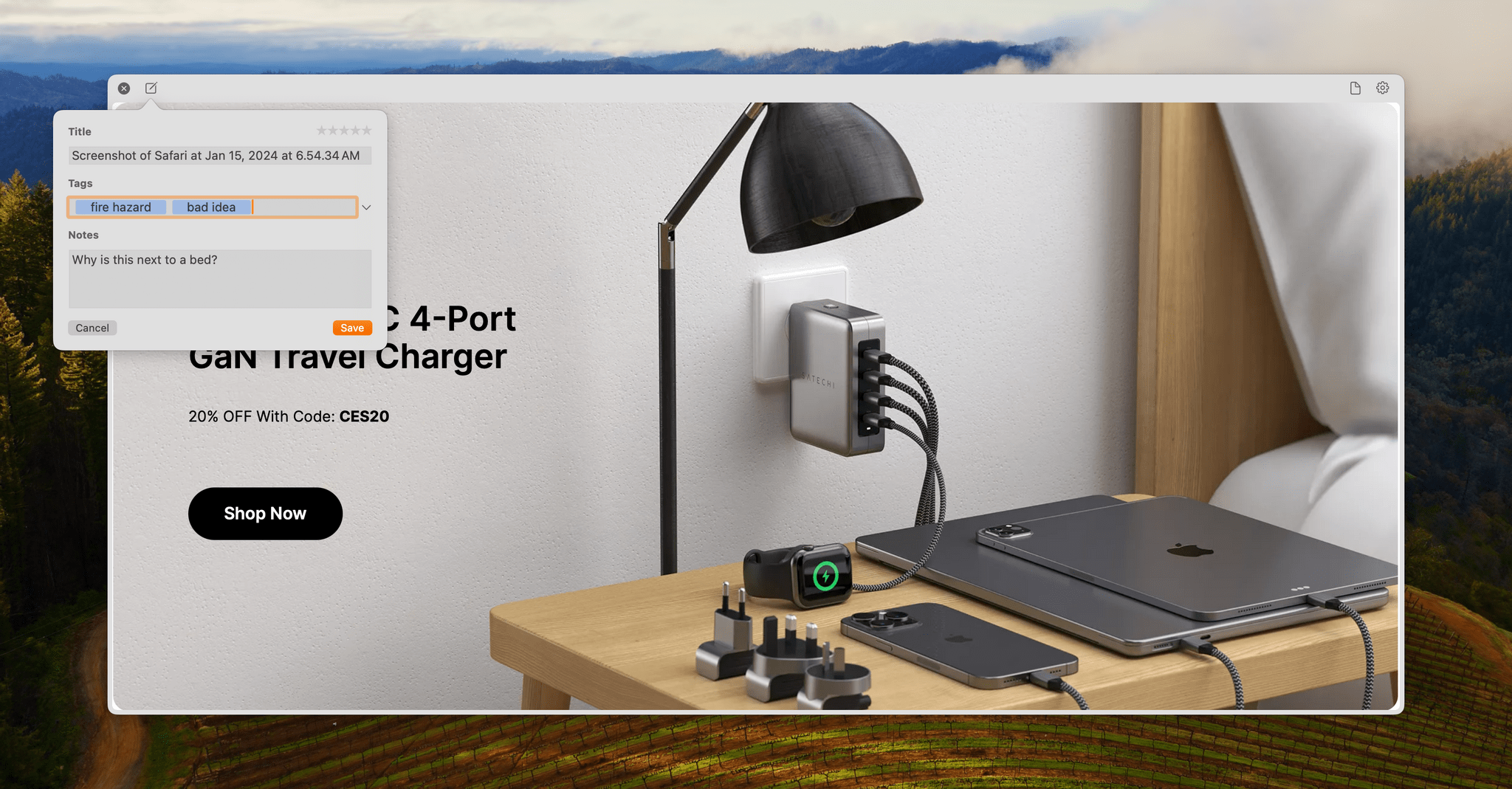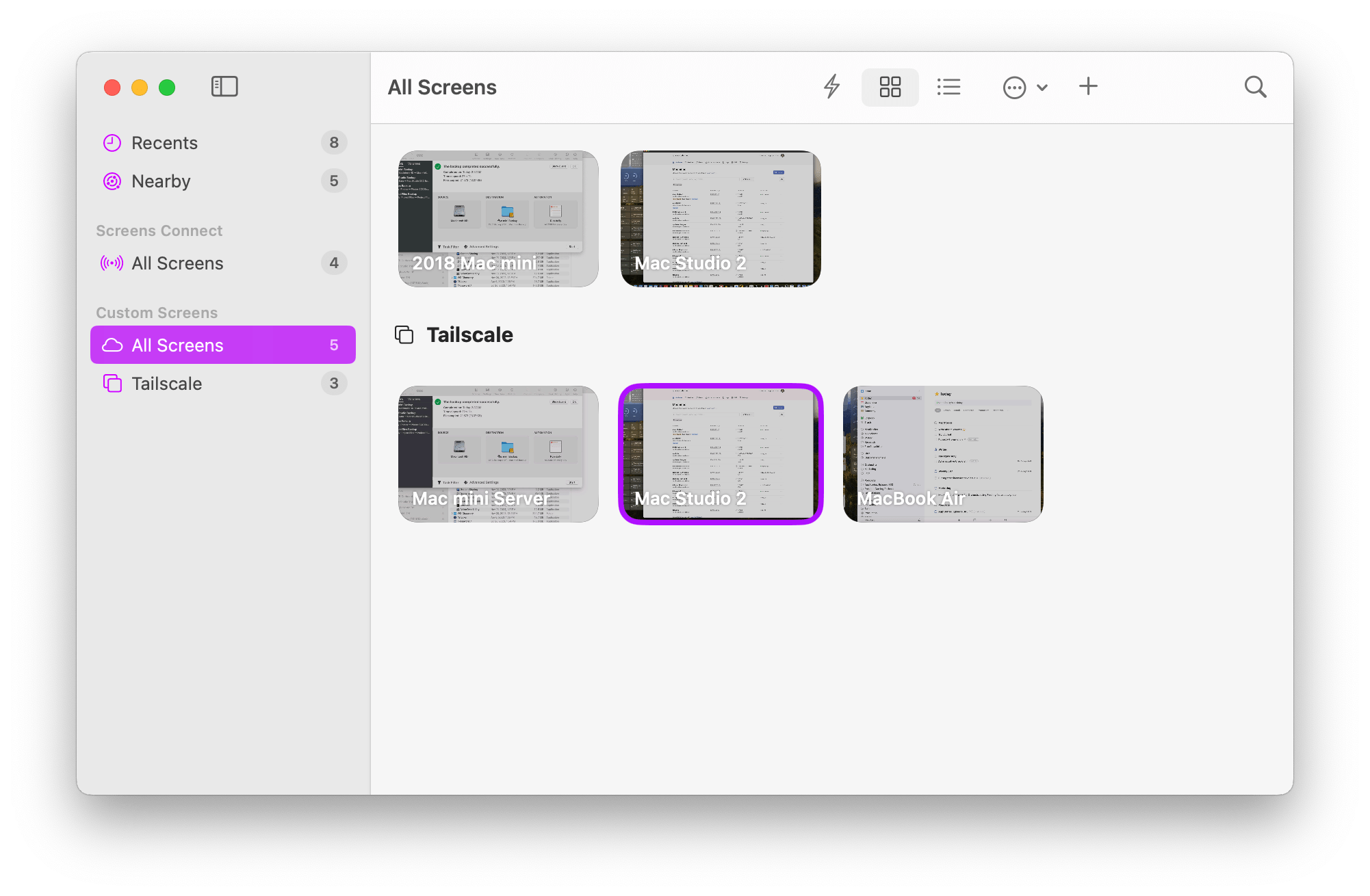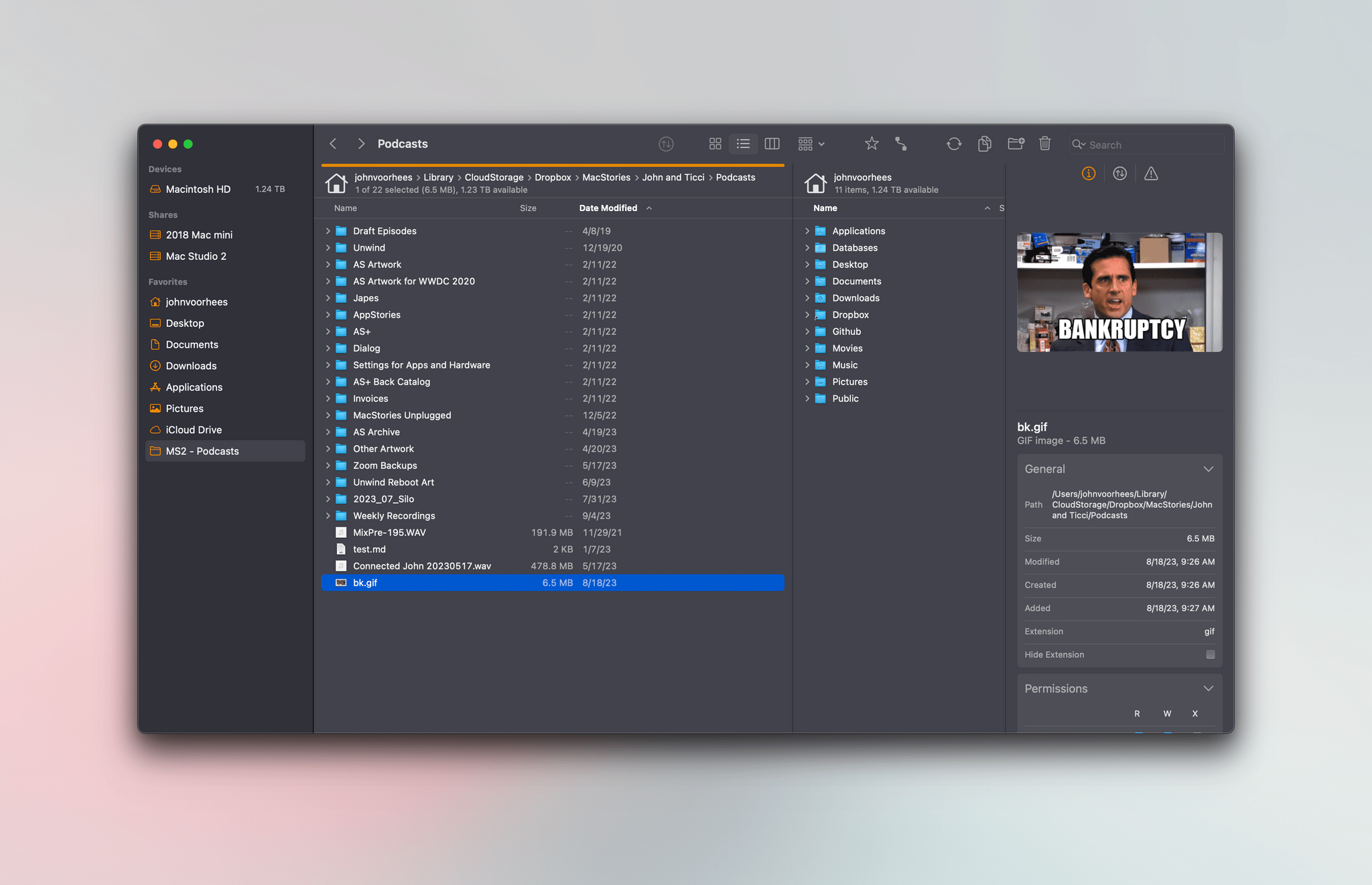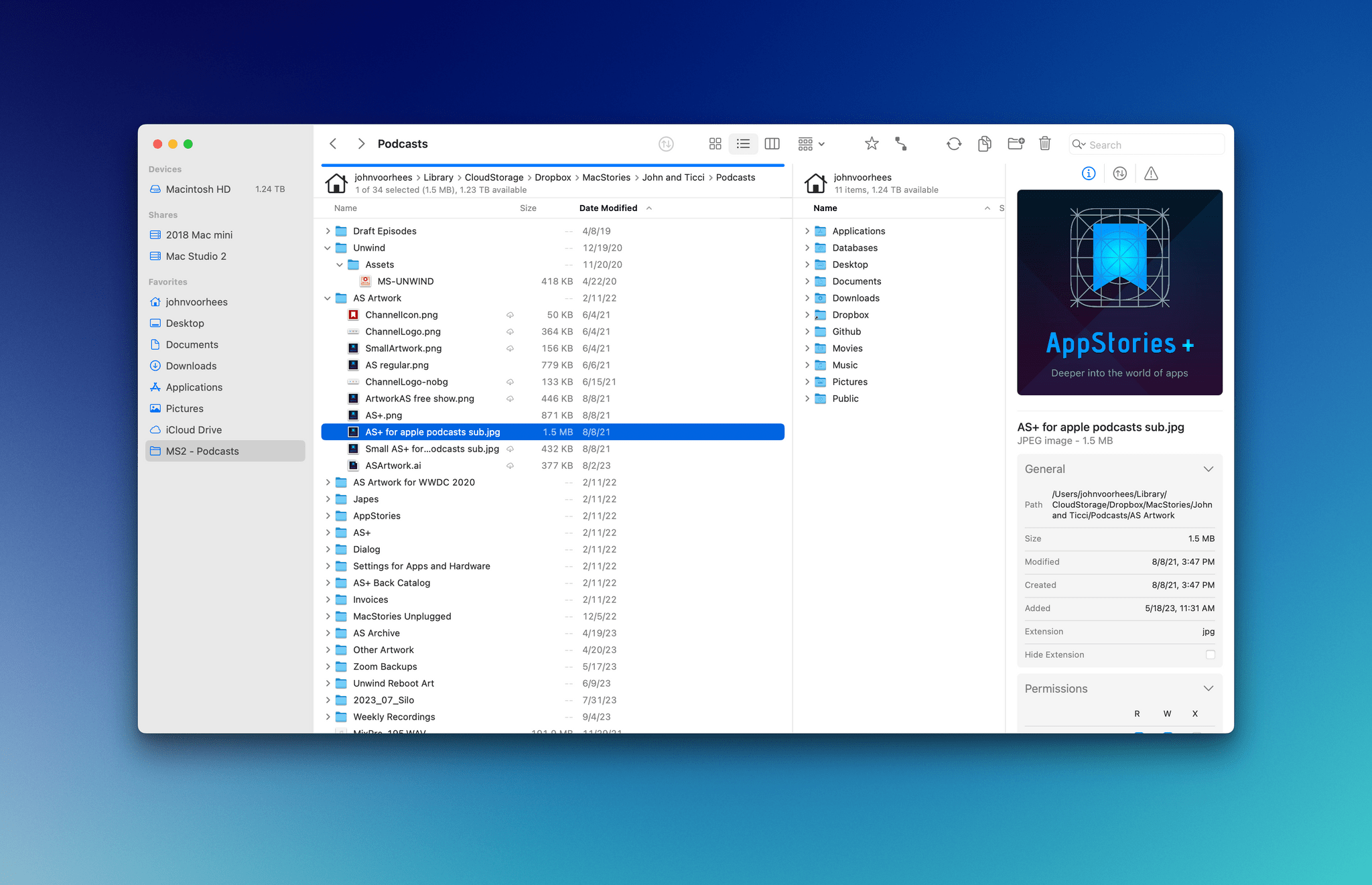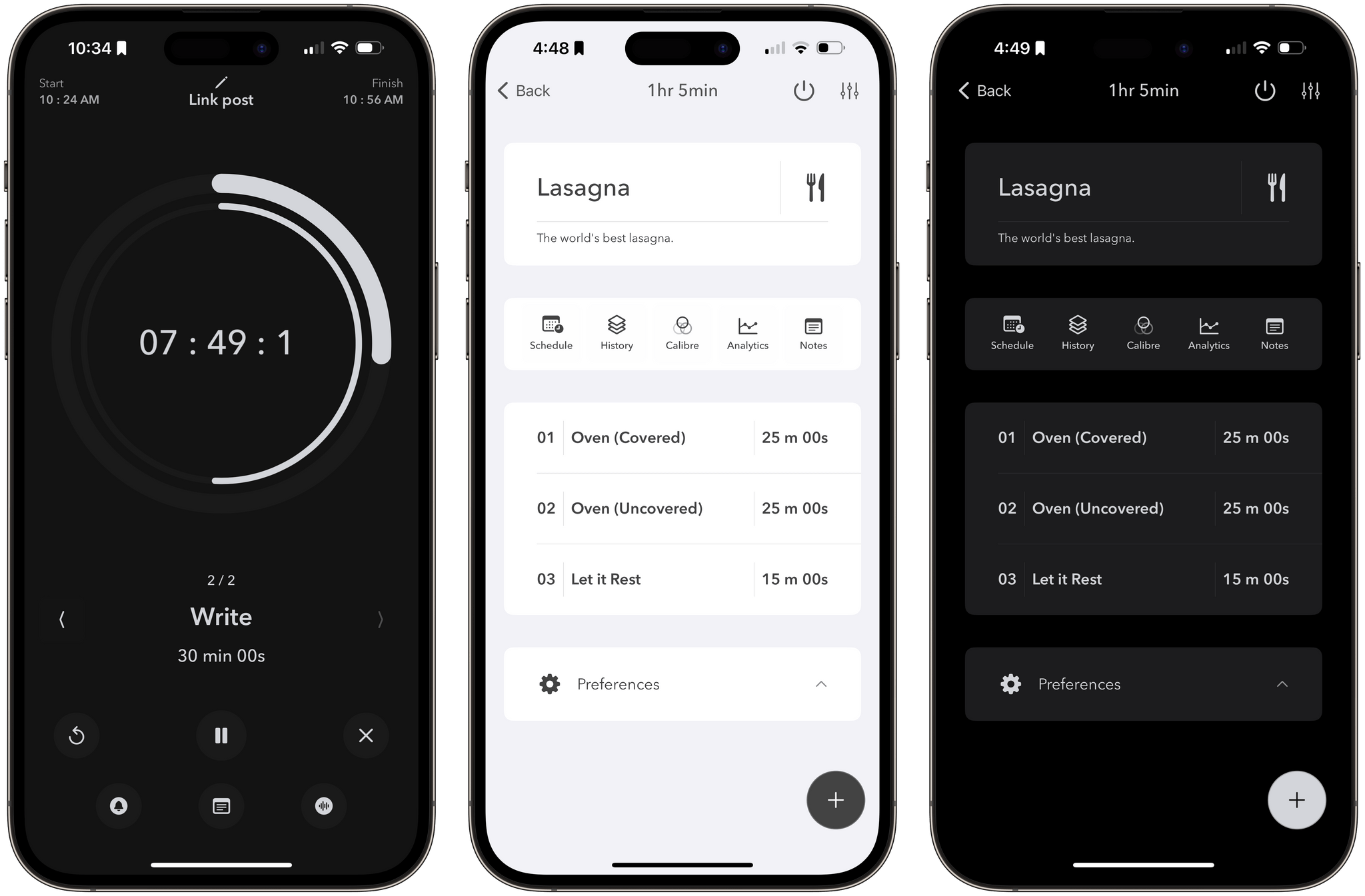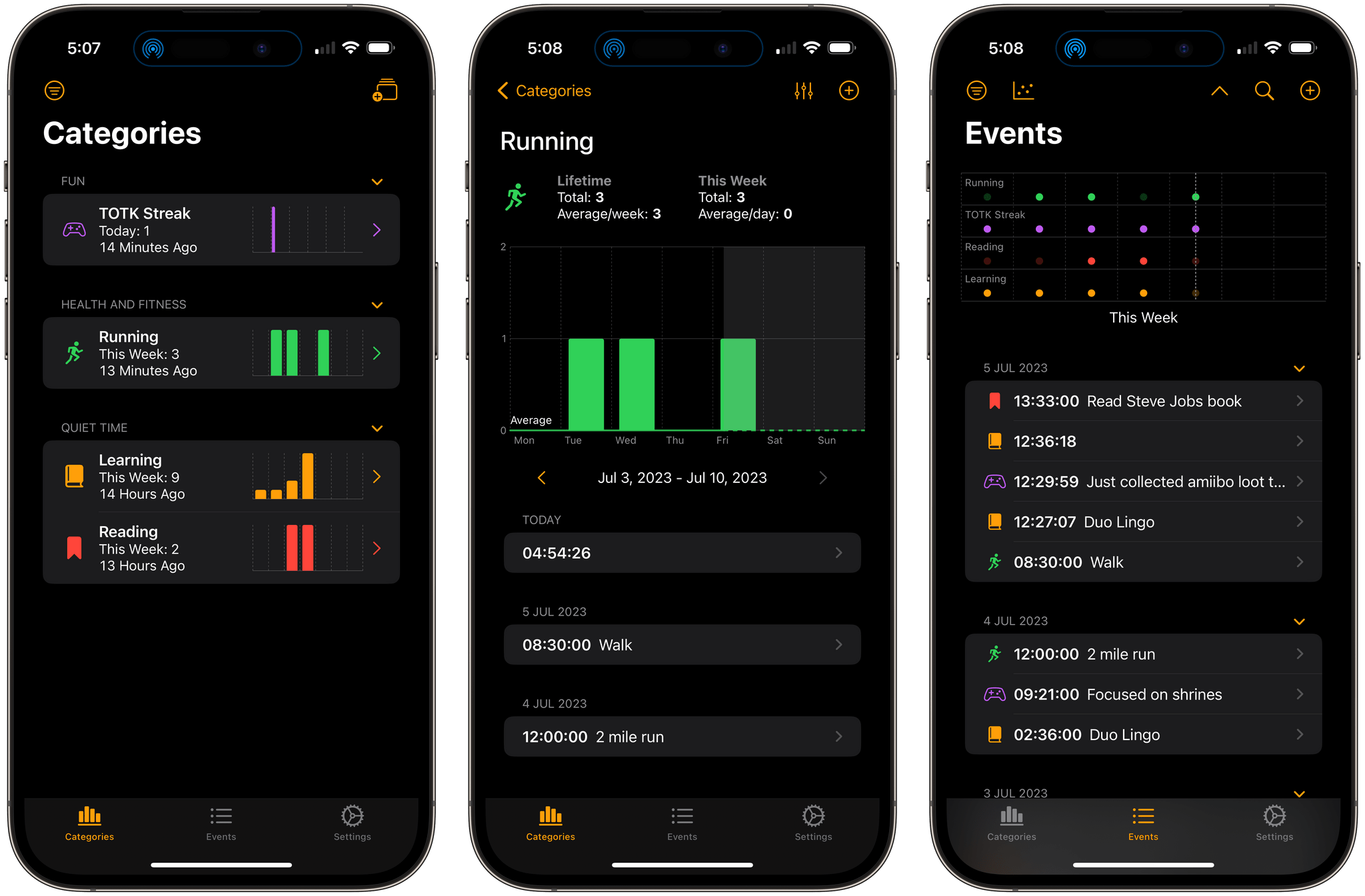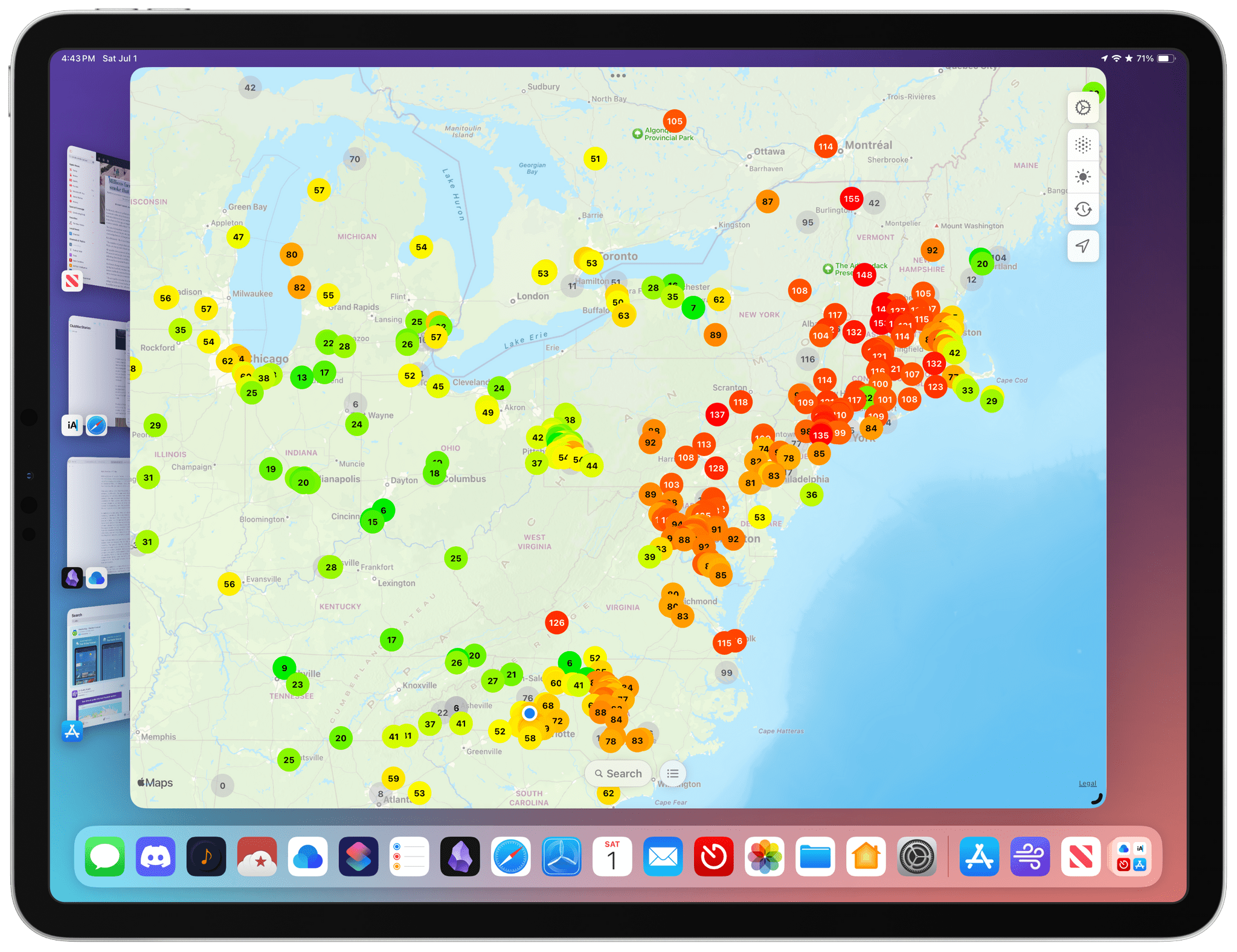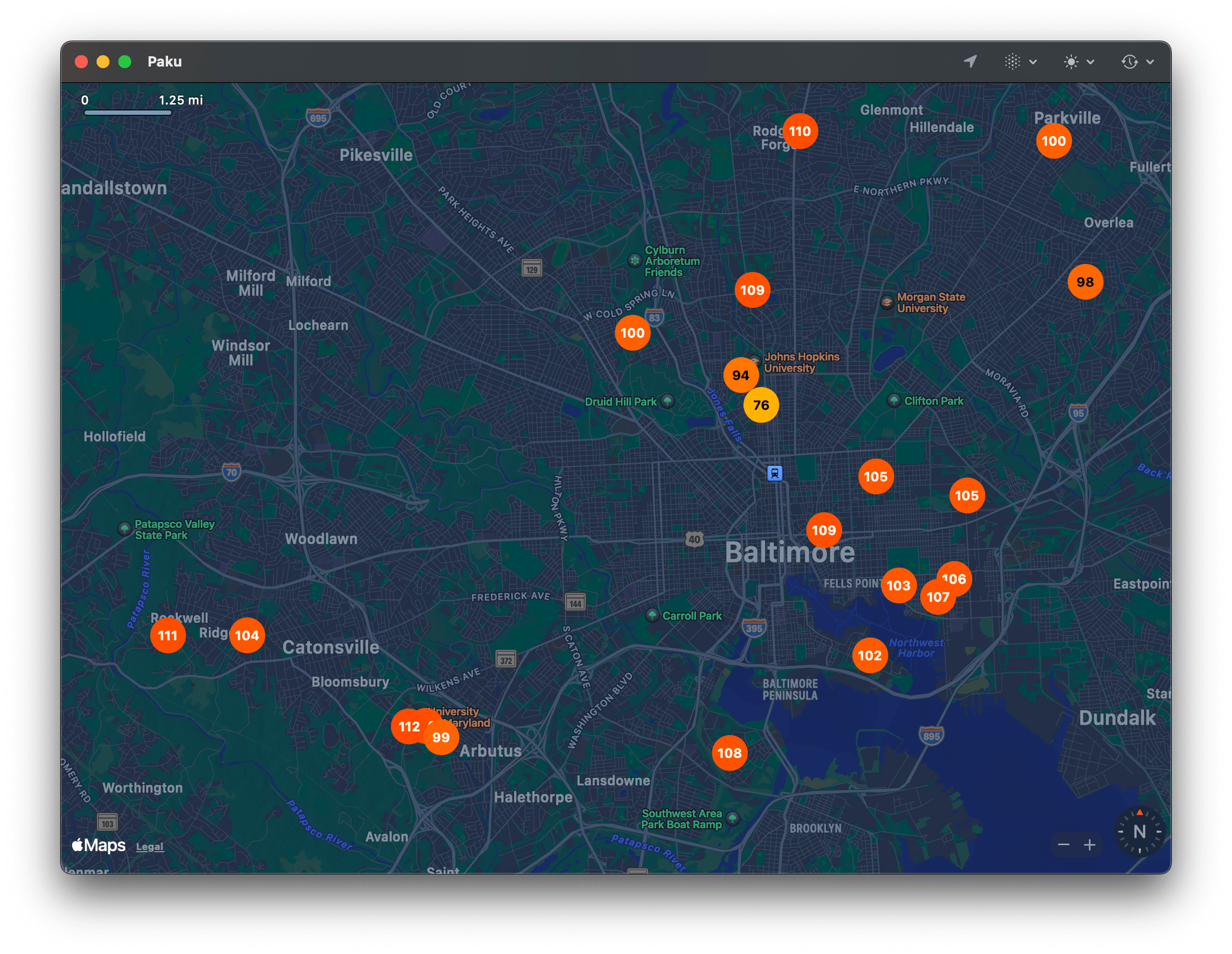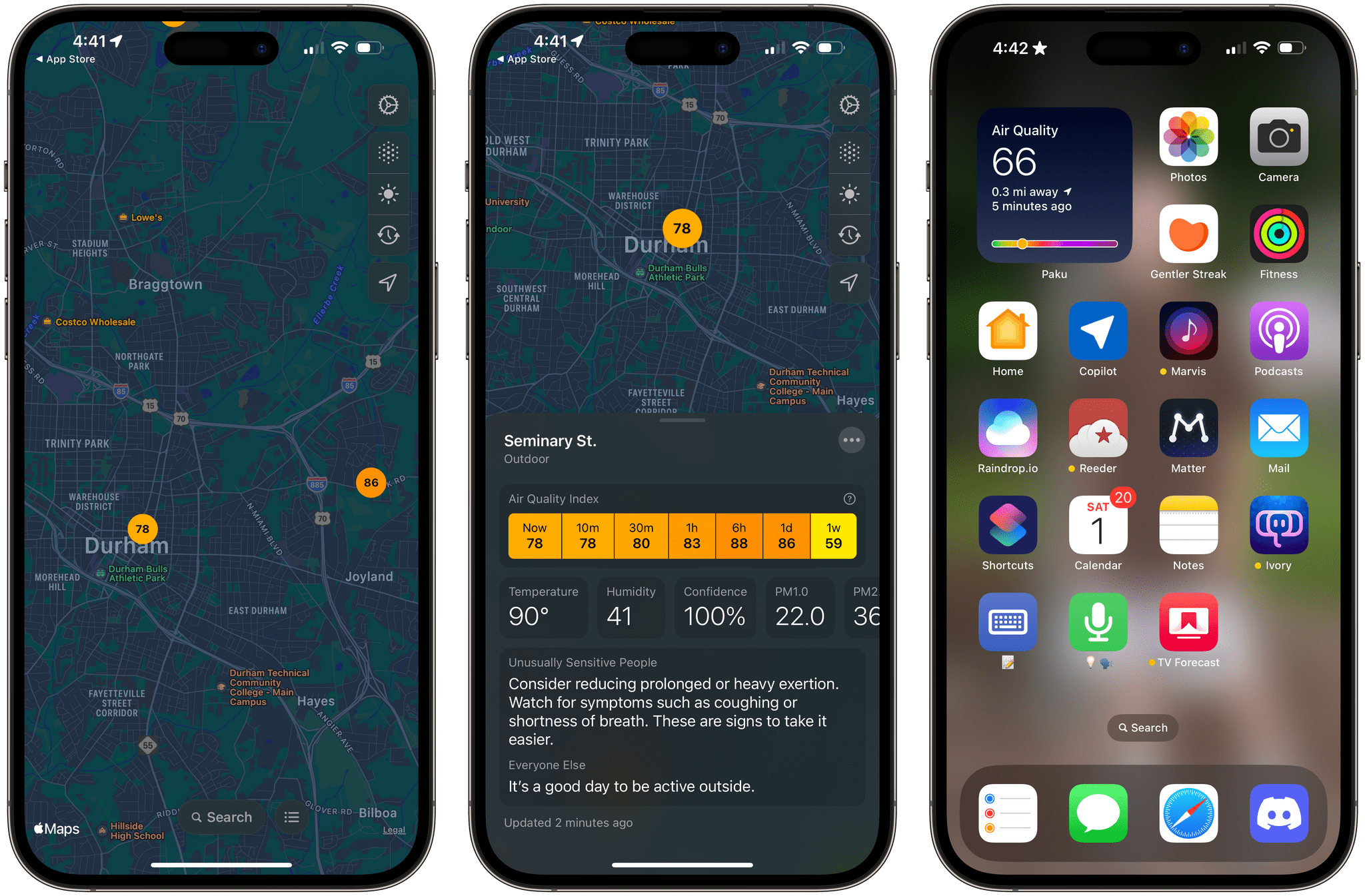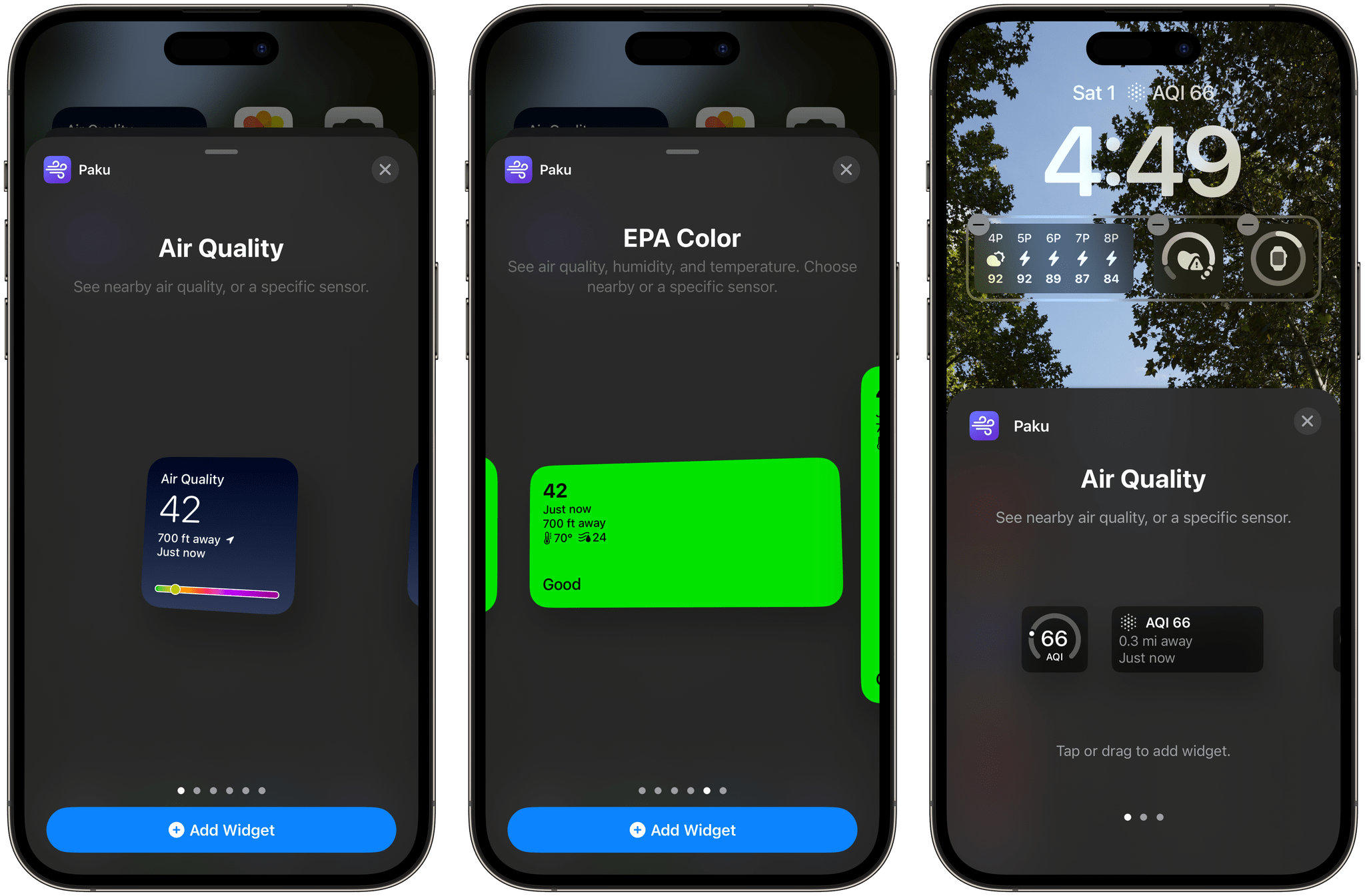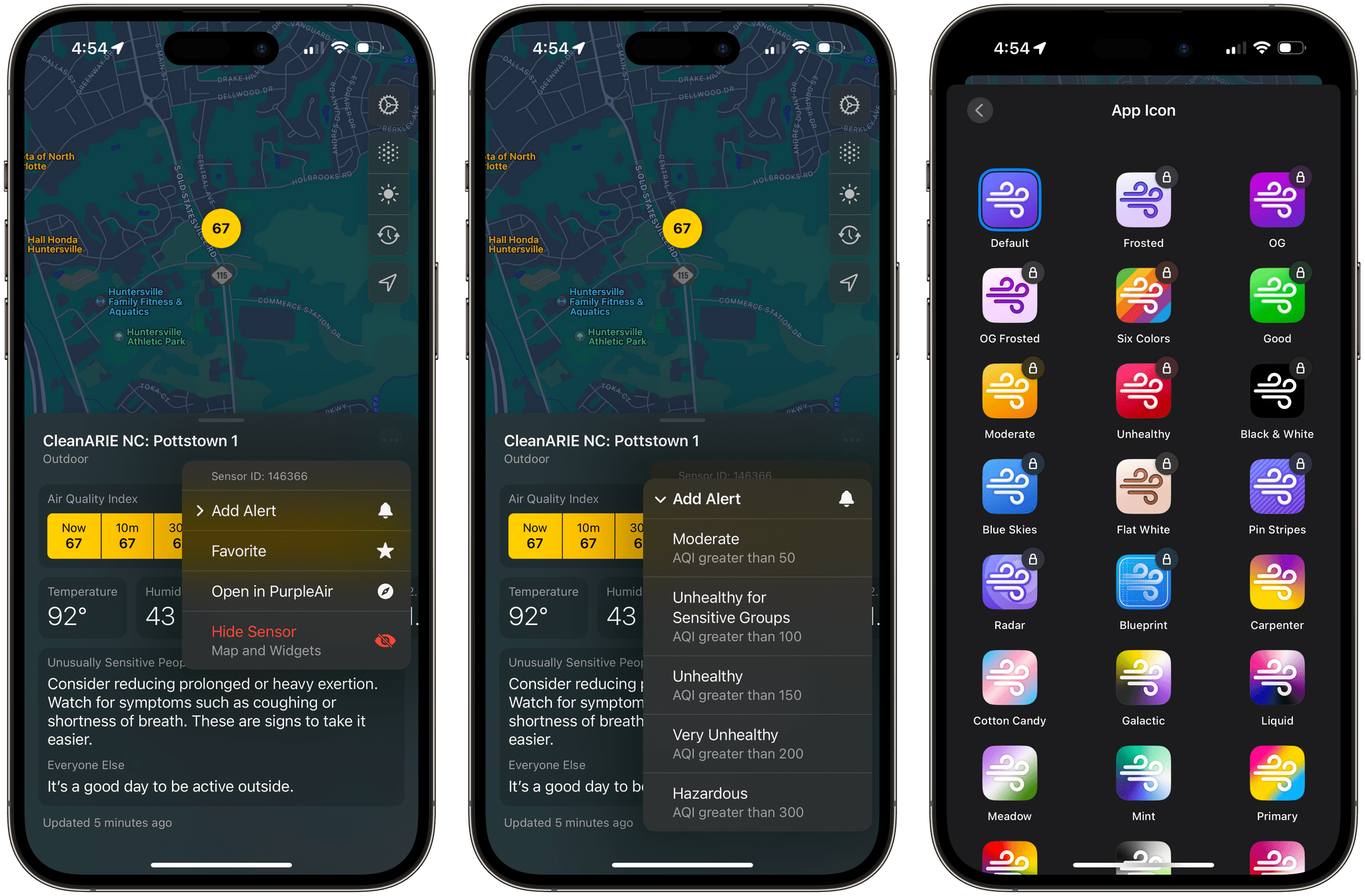ScreenFloat 2.0 is a Mac-only screenshot utility from Matthias Gansrigler of Eternal Storms Software. As Gansrigler explains, the app is like Picture-in-Picture for screenshots, allowing you to float screenshots or screen recordings above other windows to use as reference material on your Mac. That’s a great explanation of one of the core use cases for ScreenFloat 2.0, but the update opens up exciting new possibilities that go even further, which I think anyone who works with screenshots will like a lot.
Posts tagged with "utility"
ScreenFloat 2.0: Floating Reference Screenshots and Management from the Mac’s Menu Bar
Screens 5: An Updated Design, Improved User Experience, and New Business Model
Screens, the remote screen-sharing app for the iPhone, iPad, and Mac by Luc Vandal of Edovia is one of those apps that I feel like I’ve always used. It’s installed on all of my devices, letting me lazily check on the Mac in my office from my couch or grab a file that I forgot to put on my laptop when I’m working remotely. It’s also the app that makes working with my headless Mac mini server that’s humming away in a closet feel like it was sitting right on my desk.
The last time I reviewed Screens was in 2017 when version 4 was released. In the years since, the app has received regular updates, refining the workflow of connecting to remote computers and keeping up with the latest changes to Apple’s OSes. However, as an app that’s designed to be a window to another system, the UI hasn’t seen a lot of change until today’s update to version 5, which adds a bunch of refinements to how connections are organized and makes significant improvements to the app’s toolbar.
Bartender 5 Is the Essential Menu Bar Upgrade for macOS Sonoma
The last time Bartender received a major update was back in 2021. Bartender 4 brought many new powerful features to help declutter the menu bar, particularly on the new MacBook models with a notch, which made menu bar real estate become even more valuable. Bartender 5 was officially released last month, and not only is it a fantastic maintenance update that brings support for macOS Sonoma – it’s also a release full of fun additions for all Mac users.
Binarynights Releases Forklift 4, a Major Update Its File Management and Transfer Utility for Mac
Today, Binarynights released Forklift 4, its Mac file management and transfer app. Version 4 is a complete rewrite of the app, which adds a lot of new features, a modern design, and a new business model. I’ve only spent a little while with the update, but so far, I like what I’ve seen a lot.
The new design is excellent, with a modern sidebar and preview pane, along with columns for your files and folders that snap to optimized widths for your content but can be adjusted however you like. Of course, there are multiple view options for files and folders, and the toolbar is fully customizable, too. Plus, Forklift 4 adds eight different themes that look great.
Forklift 4 includes a long list of ways to connect to your files, such as FTP and SFTP, but the update also adds cloud services, including Dropbox, Google Team Drives, and Microsoft OneDrive. Other new features include syncing favorites between Macs using iCloud and saving views on a per-folder basis. Binarynights says file syncing and other actions are significantly faster, too.
Today’s update also introduces a new business model. Forklift 4 offers a free trial, and when you purchase a license, you’ll get the current version plus one or two years of updates, depending on which license you buy. After that, you can continue using the app as-is indefinitely or renew your license to continue getting updates. Also, to celebrate Forklift 4’s launch, Binarynights is adding an extra 100 days of updates for a limited time.
I like this business model a lot for utilities like Forklift. Light users who don’t need the latest and greatest features can pay once and wait to upgrade until there’s a new feature they need, but heavy users can pay more regularly to stay on top of the latest enhancements to the app.
There’s a lot more that Forklift 4 can do than I’ve mentioned above, so it’s worth checking out the app’s product page and the blog post covering the updates. Although I haven’t spent a lot of time with Forklift 4 yet, it makes a great first impression with its native, modern design, extensive customization options, and deep feature set. If you’re looking for a new file management and transfer app, Forklift 4 is worth checking out.
TimeWave: Stacked Timers Delivered with a Clean, Spare Interface
Timers are a staple of productivity systems, which is why there are so many of them on the App Store. My favorite timer apps are the ones that are the most flexible. A little structure goes a long way if you’re casting about for a system that works for you, but I prefer timer apps that can be adapted to multiple scenarios. That’s why I’ve enjoyed playing around with TimeWave so much.
The app, which works on the iPhone, iPad, and Apple Watch, plus Apple Silicon Macs in compatibility mode, isn’t new, but in a sea of timer apps, its focused black-and-white design and regular updates caught my eye. TimeWave is pitched as a focus timer that can be used with the Pomodoro time management system, which is a good use of it. However, what’s best is that TimeWave can also be used as a habit tracker, cooking timer, exercise routine timer, and more.
Callsheet Provides Movie and TV Details with an Uncluttered Native Interface
Today, Casey Liss released a brand new app called Callsheet for looking up cast and crew information about movies and TV shows. The app, which works on the iPhone and iPad, has a lot in common with movie and TV show tracking apps that I’ve covered, except for one very big difference. Callsheet isn’t a tracking app. Instead, it’s an app front end for The Movie DB, a website that offers a crowd-sourced movie and TV show database and an API for developers.
That’s an important distinction to understand. Callsheet is designed for those times that you want to know more about the people behind a movie or TV show but find the ads in apps and on websites, like IMDb, frustrating. If that resonates with you, and you’re not interested in tracking what you’ve watched, Callsheet offers a better experience for finding cast and crew information.
Chronicling: A Flexible Event Tracker with Modern Features and A Top-Notch Design
Chronicling is a brand-new event tracking app for iOS and iPadOS by Rebecca Owen. The App Store is full of apps for tracking everything from the very specific, like caffeine consumption, to apps like Chronicling that can be used to track nearly anything. What makes Owen’s app unique, though, is it’s one of the best examples of modern SwiftUI design that I’ve seen that incorporates the still relatively new Swift Charts and other recent Apple technologies to deliver a great user experience.
Trackers like Chronicling are the perfect fit for the iPhone. Most people have the device with them all the time, which makes it perfect for collecting data frequently, but it’s what you do with that data that matters the most. Maybe you’re trying to learn a new language and want to track how often you practice to hold yourself accountable. Or maybe your knee has been bothering you, and you want to keep track of when it flares up to see if it corresponds to an activity in your life. The point is, whether you’re trying to form a new habit or find patterns in things that happen throughout your day, part of the process is gathering the data. The other half of the equation is breaking the data down in a meaningful way. Chronicling does both well.
Paku: Hyper-Local Air Quality Tracking on Every Apple Platform
With millions of people facing a long, smokey summer here in the US, I thought it would be a good time to recommend Paku by Kyle Bashour, an iPhone, iPad, Mac, and Apple Watch app for tracking the air quality where you live.
Paku combines Apple’s MapKit framework with public data from PurpleAir to track air quality globally. By default, the app displays Air Quality Index data as color-coded dots on its map UI. Just like Apple Maps, you can zoom out and pan around to see data in other areas or use the app’s search functionality, but the greatest value is in knowing what the air quality is in your neighborhood.
In addition to AQI data, Paku can display temperature, humidity, and PM1.0, PM2.5, and PM10.0 data, using the toolbar overlay on the app’s map. For more information about a station’s data, tap it, and you’ll get all the available data, historical context for the current reading, and an explanation of what precautions you should take if the air quality is bad. From the three-dot More button in the corner of a station’s data view, you can also favorite an air quality station, open the PurpleAir website, or hide a station.
Paku includes Home and Lock Screen widgets too. For the iPhone’s Lock Screen, there are widgets to track air quality, temperature, and humidity. The same is true for Home Screen widgets, which feature the same types of data but use two designs. The first design uses a blue gradient background, big numerals for the primary data point, and a graphic that shows where your current air quality falls on the air quality scale. The other Home Screen widget design uses the EPA’s color scheme as the background of the widget to make the air quality reading even more glanceable.
Paku also supports a single Shortcuts action that opens the app, which is fine, but it would be better if the action returned the air quality, temperature, and humidity data instead.
Paku is free to download but offers a subscription with additional features, including the ability to set alerts based on readings from a sensor when air quality reaches one of the scale’s thresholds, such as Unhealthy or Hazardous. Subscribers can also access data from private sensors you can install at your home and pick from a long list of alternative icons. Of those paid features, notifications strike me as the most useful unless you don’t have a nearby public air quality sensor that you can rely on. I’m fortunate in that there’s a sensor less than a quarter mile from my home, so I haven’t felt the need to install my own sensor.
When I moved to North Carolina, I was struck by how clean the air was compared to the Chicago suburbs. I’d tracked air quality on and off in my old neighborhood, but when I got to North Carolina, there wasn’t any reason to do so. Every day started and finished solidly in the green zone. That changed last week, and although there are areas with far worse air quality than here, Paku is back on my Home Screen, helping me decide whether I should get my exercise outside each day or do something indoors. I could use the AQI data from a full-blown weather app, but I love Paku’s clean, focused design and the fact that I can set its widgets to a sensor that’s just down the street from my house.
Paku is available on the App Store as a free download. Notifications, private sensors, and alternative icons require a subscription that is $1.99/month or $13.99/year.
Paste: The Clipboard Management Utility Gets An Elegant New Design on the Mac
Paste feels like the kind of clipboard manager Apple might make, especially version 4.0, which was released today. The focus of today’s update is the design of the Mac version app, but it’s also available on the iPhone and iPad. However, it’s the design of the Mac app that makes Paste feel so Apple-like and sets it apart from the myriad other clipboard managers that are available.


